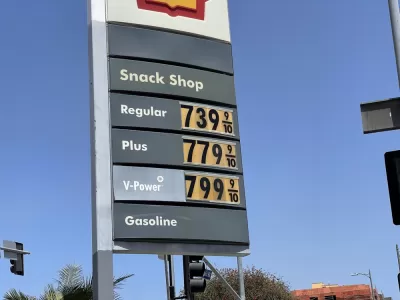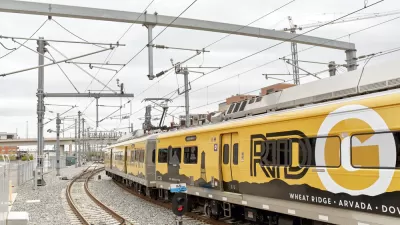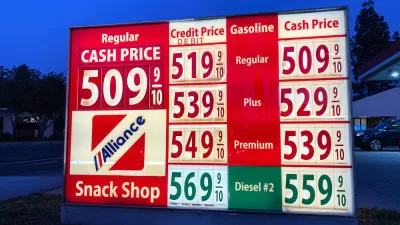Surveys and transit ridership both show some signs, with significant caveats, of the limits of the appetite for gasoline in Colorado.

While high gas prices have historically shown just how stubborn drivers can be, there is usually some reduction of driving when gas prices spike. With many people emerging back into their normal day-to-day routines and making up for lost time with road trips and vacations after two long years of pandemic restrictions, the current high gas prices are less likely to produce outcomes in line with precedent.
With the uncertainty of mobility in 2022 in mind, Matt Bloom recently dug into the mood and trends of drivers in Colorado, where the average gas price recently hit $4.62 per gallon—the highest ever recorded in the state and a 40 percent increase over last year.
“As a result, roughly 67 percent of drivers have started to drive less, according to a AAA survey of Colorado residents,” reports Bloom. “Pain at the pump has forced some people to readjust their vacation plans, rethink their work commutes and cut back on the amount they’re saving each month.”
For another key metric, albeit one that does not necessarily reflect a direct connection to gas prices, transit ridership is on the rise in the Denver area, although still well below pre-pandemic levels. “Public transit ridership in the Denver area has seen a slight increase in ridership over recent months, but it remains below pre-pandemic levels. Metro area residents took 4.8 million trips via bus or train in March — a 42 percent jump over the same time in 2021, according to RTD’s latest ridership figures,” reports Bloom.
Still, “the Colorado Department of Transportation and Denver International Airport both reported near pre-pandemic passenger numbers on roads and airplanes over the recent Memorial Day holiday,” according to Bloom, so drivers aren’t exactly abandoning their vehicles.
FULL STORY: Record gas prices force Coloradans to reevaluate commutes and summer travel plans

Alabama: Trump Terminates Settlements for Black Communities Harmed By Raw Sewage
Trump deemed the landmark civil rights agreement “illegal DEI and environmental justice policy.”

Planetizen Federal Action Tracker
A weekly monitor of how Trump’s orders and actions are impacting planners and planning in America.

The 120 Year Old Tiny Home Villages That Sheltered San Francisco’s Earthquake Refugees
More than a century ago, San Francisco mobilized to house thousands of residents displaced by the 1906 earthquake. Could their strategy offer a model for the present?

Opinion: California’s SB 79 Would Improve Housing Affordability and Transit Access
A proposed bill would legalize transit-oriented development statewide.

Record Temperatures Prompt Push for Environmental Justice Bills
Nevada legislators are proposing laws that would mandate heat mitigation measures to protect residents from the impacts of extreme heat.

Downtown Pittsburgh Set to Gain 1,300 New Housing Units
Pittsburgh’s office buildings, many of which date back to the early 20th century, are prime candidates for conversion to housing.
Urban Design for Planners 1: Software Tools
This six-course series explores essential urban design concepts using open source software and equips planners with the tools they need to participate fully in the urban design process.
Planning for Universal Design
Learn the tools for implementing Universal Design in planning regulations.
Clanton & Associates, Inc.
Jessamine County Fiscal Court
Institute for Housing and Urban Development Studies (IHS)
City of Grandview
Harvard GSD Executive Education
Toledo-Lucas County Plan Commissions
Salt Lake City
NYU Wagner Graduate School of Public Service





























